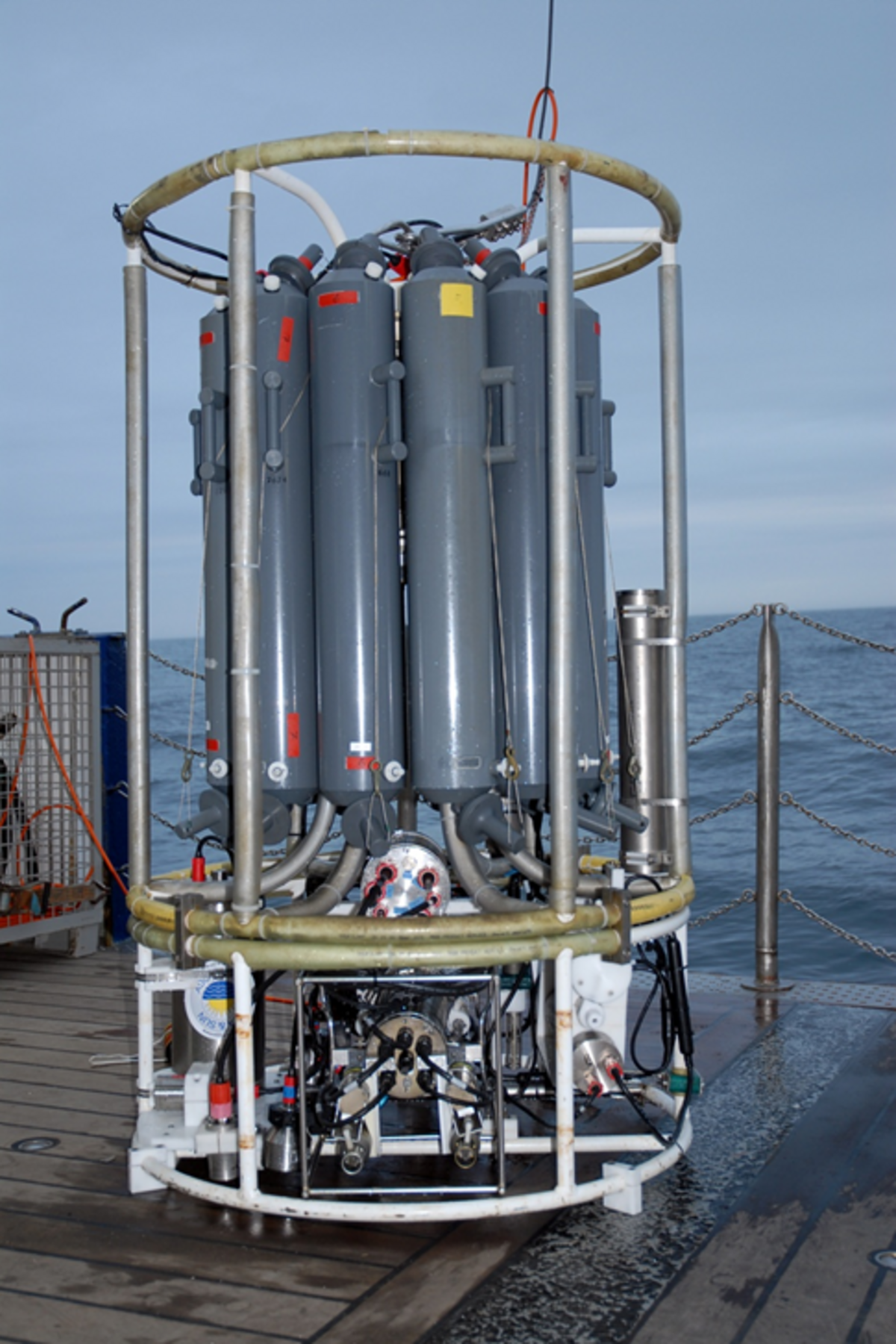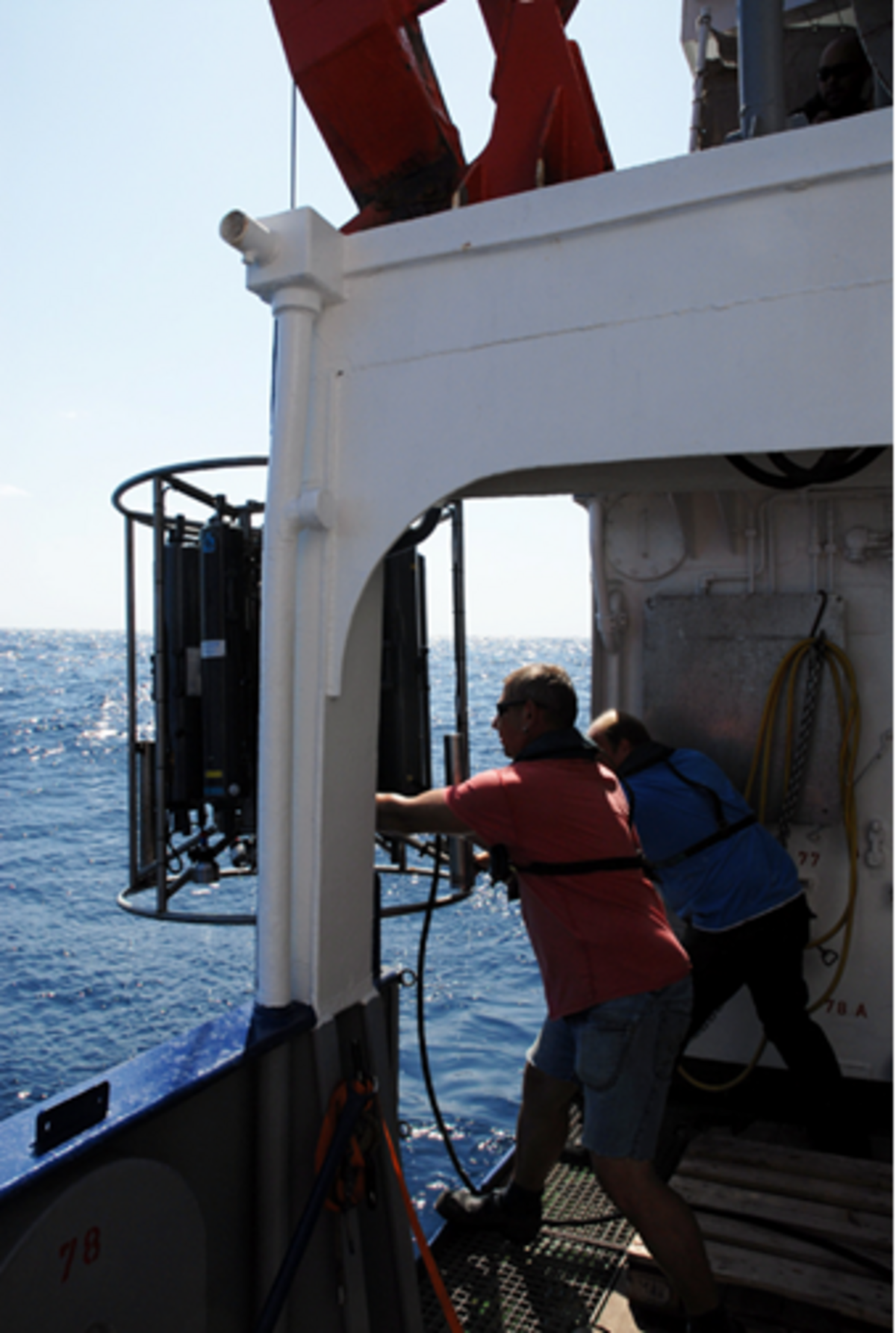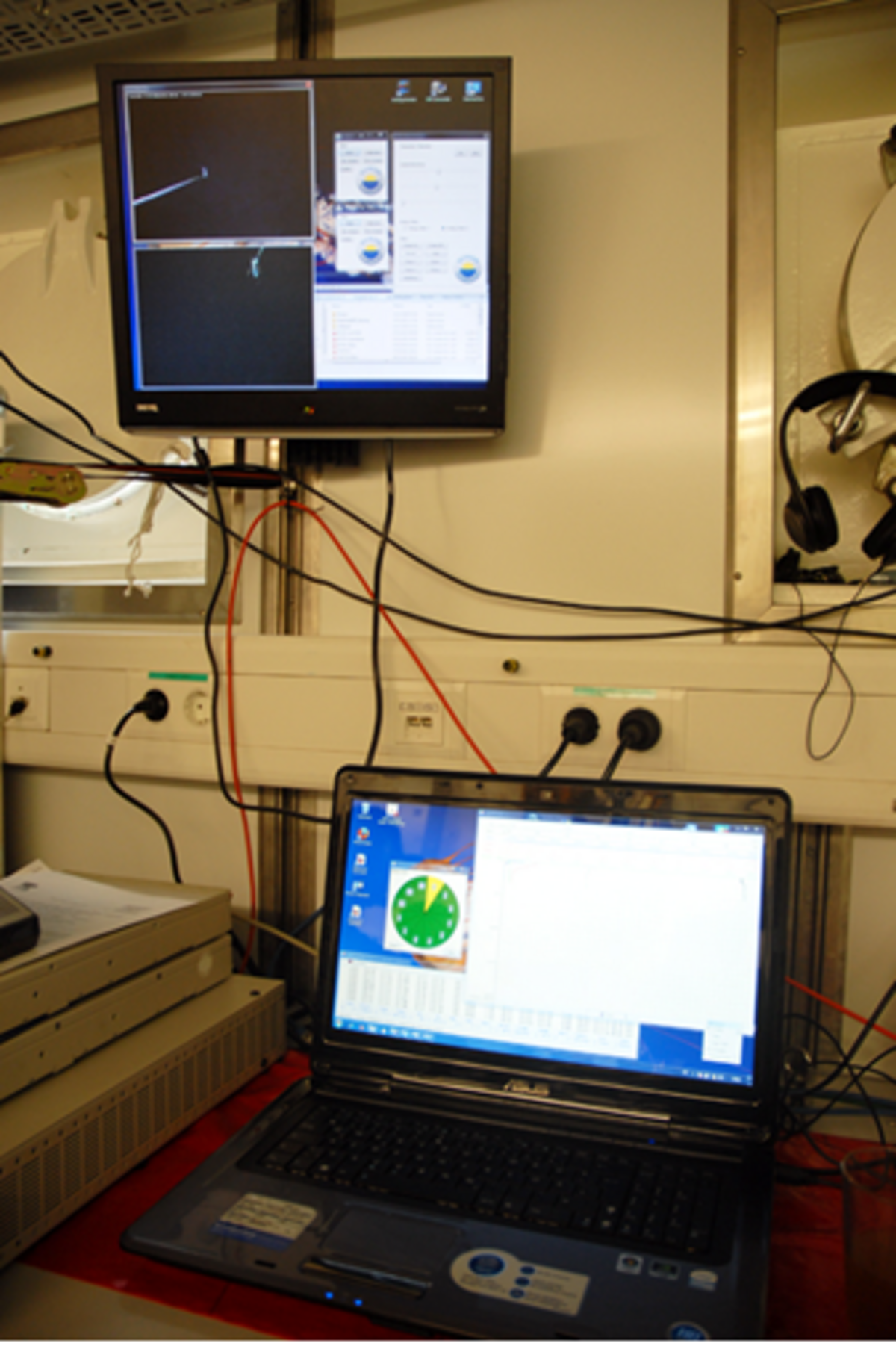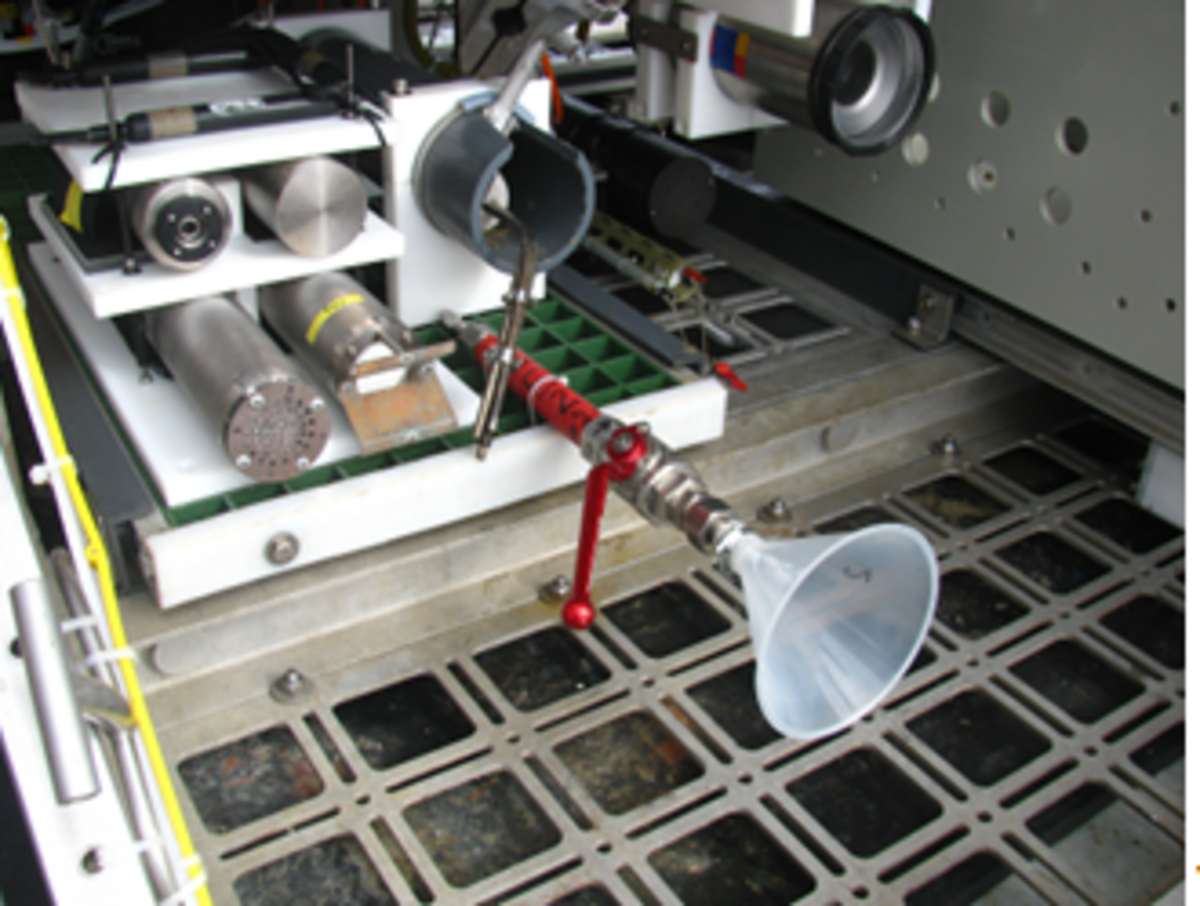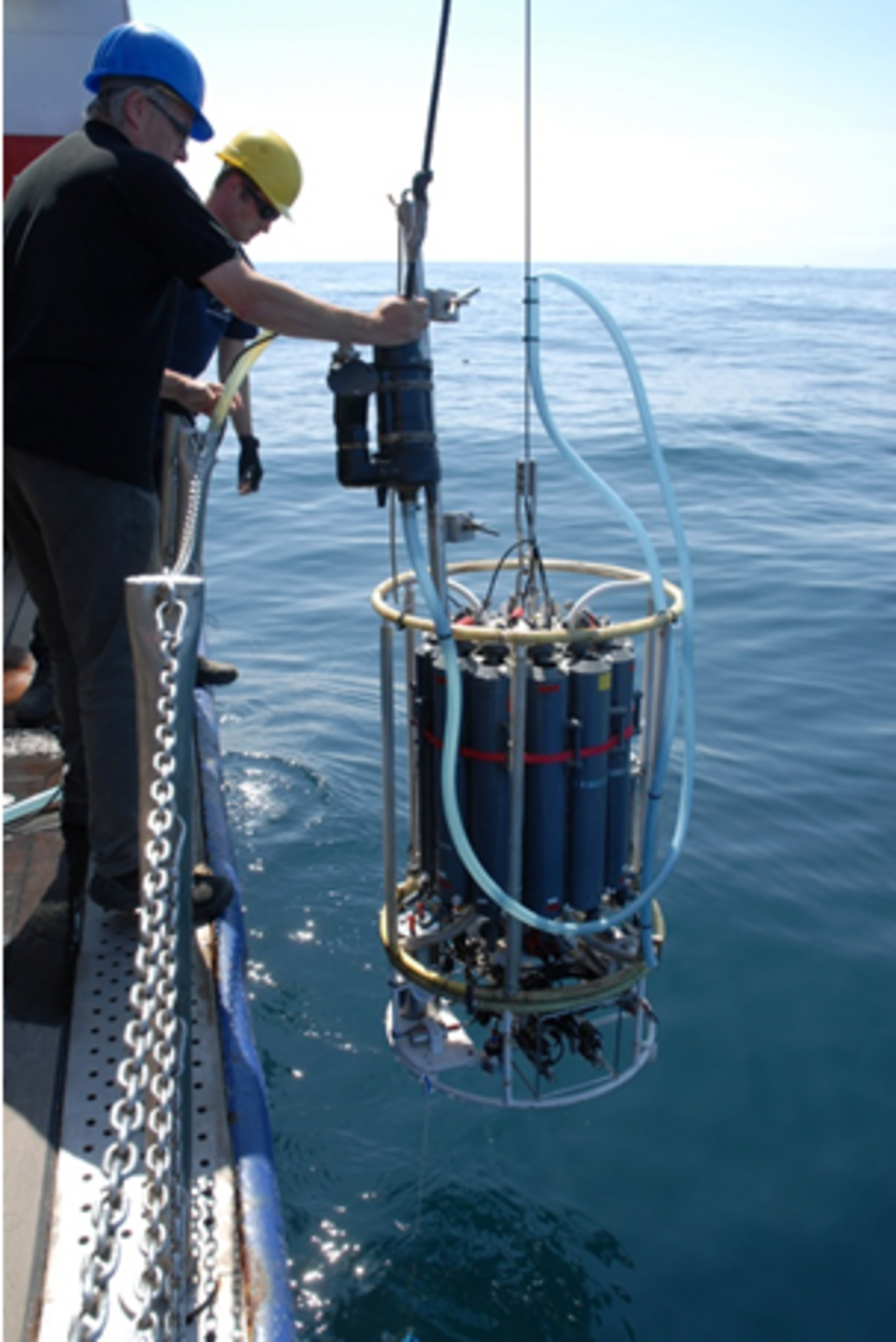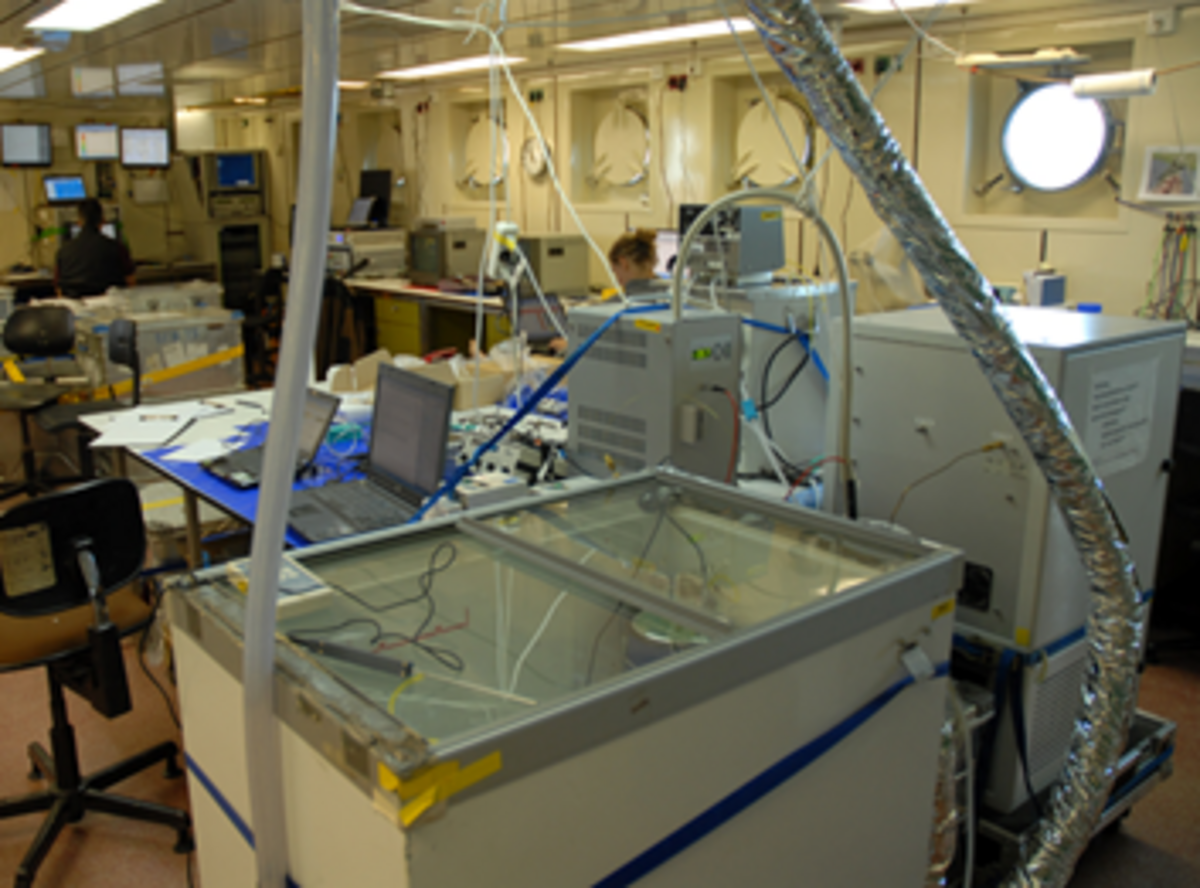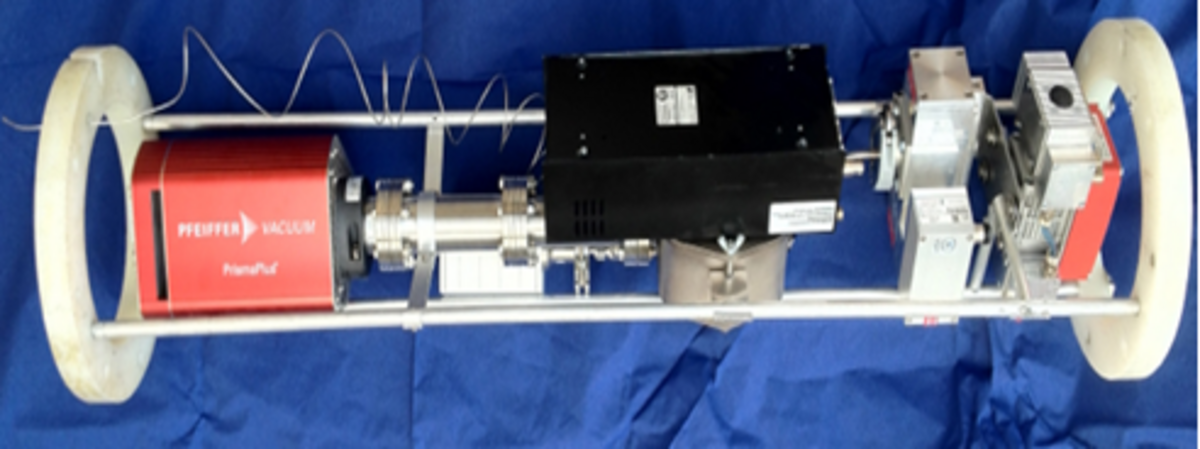Sub-seabed geological reservoirs are increasingly explored and exploited to meet the ever growing demand for energy and mineral resources and waste-disposal capacities. The research unit Marine Geosystems is developing cutting-edge monitoring techniques and novel approaches for resource utilization to mitigate and minimize the detrimental effects of these industrial activities on the marine environment.
Video Water Sampler Rosette
A newly designed Water Sampler Rosette system is used to study dissolved gas concentrations at selected water depths. The system is towed by winch and water depths are controlled by pressure readings of the attached CTD (SBE9plus or KMS86). A digital video telemetry system (Sea & Sun, Trappenkamp - SST) providing real-time monitoring of the seafloor is used to control the distance to the seafloor in “bottom view” mode. The telemetry provides a bidirectional transmission of serial data (e.g. CTD or compass data) and video data with a resolution of 720 x 576 pixels at 25 color pictures per second via a standard coaxial cable with a length of up to 8000 m. The main video camera consists of a full HD camcorder which can be controlled via the telemetry (zoom, start/stop internal recording with a resolution of 2.3 Mpixel). By using the integrated Ethernet interface several IP cameras can be controlled and their video data transmitted in parallel. Light is provided by 3 LED lights (Bowtech) which can be dimmed and adjusted to the required light conditions and turbidity. The telemetry provides power of up to 1.2 kW for external consumers.
Modular Sensor Packages
The CTD underwater unit can be equipped with external sensors (pH, CO2, CH4, PAH) and Niskin water samples can be fired at selected depth and locations during the CTD tracks and casts. Alternatively, these sensors can be mounted on any other platform like an ROV or AUV.
The sensor (SBE27-0198) combines a pressure balanced glass-electrode, Ag/AgCl reference probe, and a platinum O.R.P. electrode (1200 m rated).
The HydroC instrument package capable of measuring pCO2, polyaromatic hydrocarbons, and methane in situ (Contros, Systems and Solutions, Germany), is mounted to the Video-CTD frame. The sensors (CH4, CO2) store internal high resolution binary data, moreover, the sensors (PAH, CO2, CH4) are also connected to the SBE9plus unit by serial cable and analogue data signals (0-5 V) are recorded online during CTD stations. An overview of the Contros HydroC sensors and their features is shown in Table 1.
Table 1: HydroC sensor specifications given by CONTROS.
| | HydroC TM / CH4 | HydroC TM / PAH | HydroC TM / CO2 |
| Measuring range | 200 nM – 50µM | 0-500 ppm | 200-1000 ppm |
| Resolution | 15-19 nM | 0.1 ppm | 1 ppm |
| Response time (t63) | 2 min | 0.5 s | 1 min |
| Warm-up time | ~ 30 min | Less than 10 s | ~30 min |
| Operational depth | 4000 m | 500 m | 4000 m |
Ex situ gas measurements using MIMS
For continuous and simultaneous dissolved gas measurements of e.g. pCO2, CH4, N2, Ar, O2 in the bottom water at shallow water depth an in situ multi-phase pump is attached to the winch cable connecting an on board Membrane Inlet Mass Spectrometer (MIMS, GAM 200, InProcessInstruments) with the rosette by a 1 inch plastic tube. The inlet of the tube is mounted on the CTD frame at the height of the in situ CO2 and CH4 sensors described above. Distance to the seafloor is visually controlled online using a video system. The towing speed of this CTD system ranged between 0.5 – 0.8 kts.
Underwater Mass Spectrometry (UMS)
The determination of the fluid composition in dissolved gases has always been limited by technical challenges. Indeed, only a limited amount of samples can be brought back to the surface for traditional analyses, and even these samples can suffer from problems due to degassing during the pressure decrease while the samples are brought back to the surface. The ability to measure all dissolved gases directly in situ is therefore of major interest. At present, we are developing an underwater mass spectrometer which can be integrated in any cabled (OFOS, ROV) or autonomous platform (Lander, AUV).
In situ ammonium recorder
As limiting elements for biological surface water primary productivity, release of nutrients from the seabed plays a major role in ocean biogeochemistry. Via positive feedback mechanisms nutrient release affects cycles of many other elements in particular carbon and contributes to the maintenance or even spreading of global hypoxia.
In order to conduct time series of seabed ammonium release an in situ ammonium recorder following the concept of Hall and Aller (1992) and Plant et al. (2009) is presently developed at GEOMAR.


